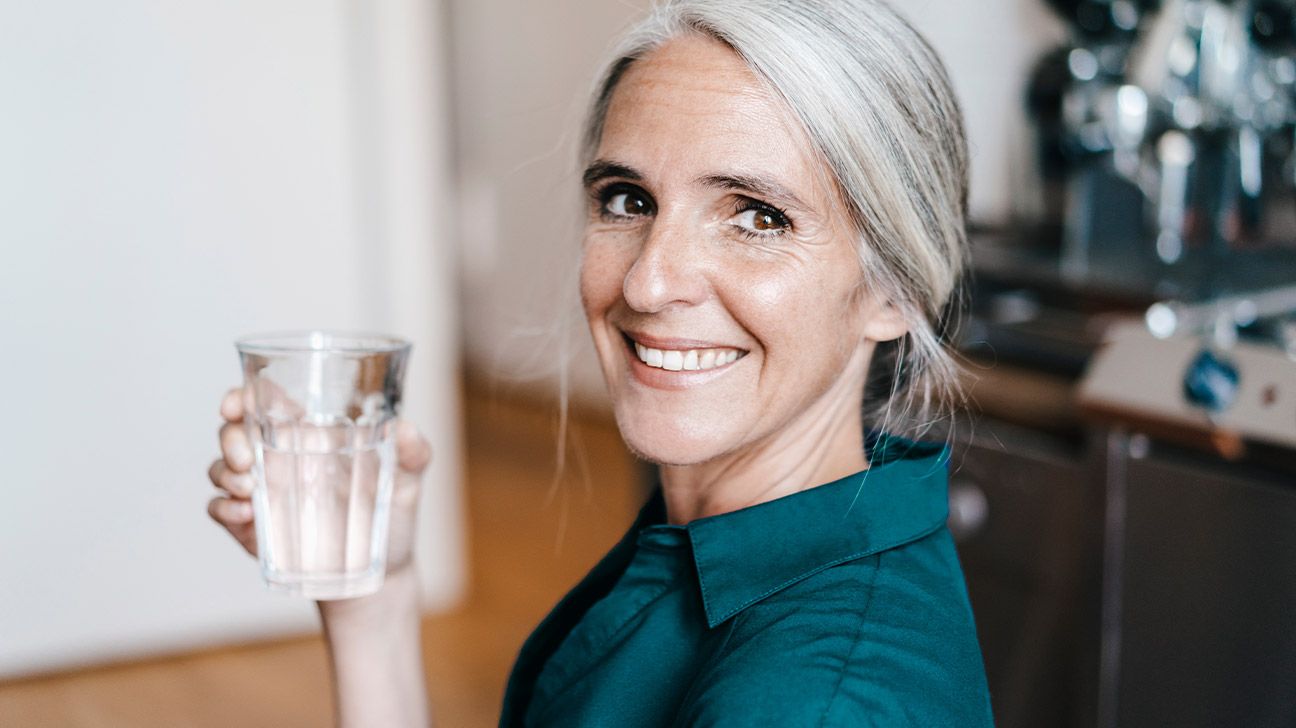6 Tips for Making Colonoscopy Prep More Tolerable
May 20, 2020
Content created for the Bezzy community and sponsored by our partners. Learn More

Following a liquid diet is essential before a colonoscopy. But there are a few ways you can make it more tolerable.
When you’re living with inflammatory bowel disease (IBD) such as Crohn’s disease or ulcerative colitis, the thought of getting ready for a colonoscopy can be distressing.
But proper colonoscopy prep is crucial and will prevent you from having to get rechecked and repeating the process.
Some strategies can ease your discomfort as you prepare for the procedure.


1. Stick to a liquid diet the day before your procedure
People without IBD are told to avoid raw fruits, vegetables, nuts, and seeds for at least half a day before the procedure.
But those with Crohn’s or ulcerative colitis tend to do well by following a liquid diet — particularly with clear liquids like broth, water, tea, and even Jell-O — for the entire day before the colonoscopy, says Dr. Ashkan Farhadi, a gastroenterologist at MemorialCare Orange Coast Medical Center.
“I tend to prefer a whole day of a liquid diet for everyone,” he says. “But especially with those who have IBD, it can be a good prep strategy because it increases hydration and reduces risk of not having the bowel be clear.”
One important note is not to eat or drink anything red or orange, Farhadi says. For example, you can have Gatorade, but choose the yellow or green variety, he suggests.
That’s because the prep will cause everything you consume to go through your system quickly without being absorbed. That means liquids keep their color in the colon, and a red drink can be mistaken for blood.
2. Split the prep into 2 days
Until recently, most colonoscopy prep was done in a relatively short window, with people starting the afternoon or evening before the procedure and finishing their prep before going to bed.
But that’s part of what made it so unpleasant, says Dr. Peter Stanich, a gastroenterologist at The Ohio State University Wexner Medical Center.
“That type of standard prep was causing people to feel nausea, in part from the large amount of liquid they were ingesting at a time,” he says. “That’s led nearly all gastroenterologists to prefer a split prep, which means you do half the evening and half in the morning before the procedure. That has made things much better.”
This works with all types of prep options, Farhadi adds.
So, even if the instructions on the bottle or the info sheet say you need to have 8 ounces (oz) continuously until you finish, you can still split up the prep, and it’ll work fine.
3. Drink prep throughout the day
Also, you don’t have to drink 8 oz at a time, either. As long as you’re making progress in consuming the prep solution, you can drink smaller amounts while stretching out the time frame to do it.
Farhadi suggests starting earlier the day before a procedure, like late morning or early afternoon. Keep the prep in the fridge, he says, and drink some whenever you pass through the kitchen.
“There’s no rule that you need to drink a certain amount at a certain time,” Farhadi notes. “Especially if you’ve had nausea with prep before, take smaller amounts over a longer period of time. It will still work just as well, and you’ll likely tolerate it better.”
4. Chill the prep
Although prep is sometimes flavored, many people find the taste barely tolerable, and it’s worse when it’s warm, Stanich says.
That’s why keeping it in the refrigerator for a few hours beforehand, or even doing a quick chill in the freezer, can be helpful.
5. Use a straw
Another way to reduce the prep taste is to use a straw. This is a favorite trick for those who’ve had multiple colonoscopies, like those with IBD, Stanich says.
The straw allows you to drink the prep solution while bypassing most of your taste buds, as long as you do it quickly and don’t let the solution swish in your mouth.
6. Get some activity, carefully
As you’re working through the prep, it can be helpful to get more movement so you can keep things moving. You could walk around your house more or stand while drinking the prep.
But don’t venture too far from the bathroom, Farhadi says.
“I wouldn’t go outside and garden or anything,” he says. “Especially as you start to get lower in the amount of prep you need to finish, you’re going to be very close to the toilet. So, be ready.”
Find what works for you
“Colonoscopy prep is obviously no one’s idea of a fun time,” Stanich says. “But focusing on ways to make it easier can be helpful and make the process more tolerable.”
This is especially true if you live with with IBD. You may need to have colonoscopies more frequently to monitor disease activity and detect colorectal cancer or changes in the colon, according to the Crohn’s and Colitis Foundation.
If you’ve tried similar tips but still have difficulty with prep, talk with a healthcare professional about trying a different prep solution or other tactics that may make the process easier.
Medically reviewed on September 18, 2023
3 Sources


Like the story? React, bookmark, or share below:
Have thoughts or suggestions about this article? Email us at article-feedback@bezzy.com.
About the author